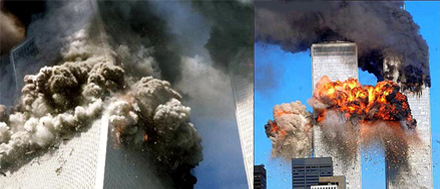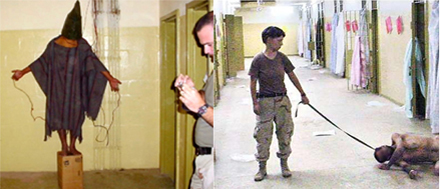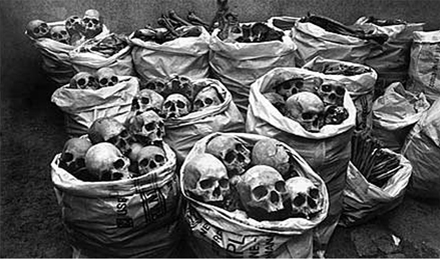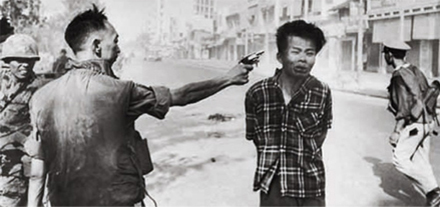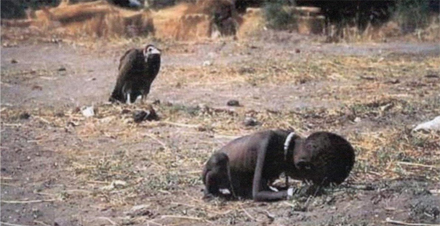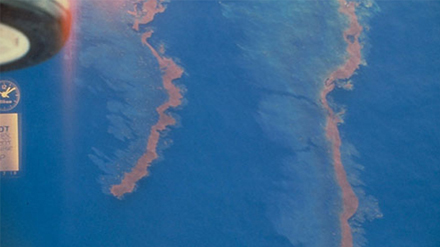10. Luxembourg – 7.6 points
Living in the worlds richest country inevitably puts a smile on your face! This small landlocked European country has an army of 800 people (yes, 800). They don’t have a navy nor an air force but together with Belgium they can afford to own 1 military cargo plane. Beat that US! 
According to the Guinness Book of World Records Luxembourg holds the world record as the country that consumes most alcohol in the world per citizen.
9. Guatemala – 7,6 points
This Central American country borders with Mexico in the north and is located between the Pacific Ocean and the Caribbean Sea. This location makes it a very difficult country to stay happy in – Guatemala is frequently ravished by hurricanes and earthquakes that often kill thousands of people. Main exports of Guatemala include coffee, sugar and bananas. The latter is probably why they are so happy – have you ever seen someone that can stay sad while eating a banana?  56% of all Guatemalans live in poverty. If you ask me, they can use the cheap bananas!
56% of all Guatemalans live in poverty. If you ask me, they can use the cheap bananas!
8. Canada – 7,6 points
Many people have no idea that Canada’s head of state is actually Queen Elizabeth II – the head of the British Monarchy. This meant that when Britain declared war on Germany in World War I, Canada was automatically at war with the soon to be Nazi country. Unlike the neighboring US, Canada has never cancelled its relations with Cuba and has declined to take part from the Iraq War – instead, it has played a leading role in the United Nations peacekeeping missions and helped to launch a $1.5 billion initiative to help develop vaccines that could save millions of people in poor countries. It seems that happy people make a happy country!
7. Sweden – 7,7 points
This “welfare state” model is an excellent example of effective national taxes. Among other things the state provides universal tax-funded childcare, parental leave, health care, education (including university), retirement pensions and sick leave. Including value added tax (VAT – kind of like sales tax), it is possible to pay up to 80% of your income as taxes. Contrary to popular belief, Swedes are quite OK with their high taxes – after all it gives them tons of high quality services and they almost never need to take drastic action like taking quick payday loans just to make ends meet. In fact, most of the services for the public are free, so what’s not to be happy about?
Sweden is also the home of IKEA – the worlds largest furniture store. IKEA’s founder Ingvar Kampard is famous for being the 7th richest person in the world (Net worth $31 billion) and driving a 15 year old Volvo station wagon. It has been claimed that more people read the Ikea catalogue than the Bible – and that one in ten Europeans have been conceived on an Ikea bed.
6. Australia – 7,7 points
The name “Australia” comes from the Latin word “Australis”, meaning “Southern”. Australia is the only country in the world, that consists of an entire continent. Between 1788 and 1868 the British used Australia as a colony to deport their convicted criminals – these people are the predecessors to many of today’s citizens. Australians are famous for playing rugby and calling each-other “mates”.
5. Finland – 7,7 points
This is the country that brought us Nokia – the worlds largest manufacturer of mobile phones. In 2003 Nokia accounted for about a quarter of Finland’s exports and in 2006 it generated more revenue than the entire budget of Finland. Before starting to make mobile phones Nokia made (yes, it’s true) rubber boots! Finland was also home to Simo Häyhä – considered to be the most deadly sniper through history with 542 kills. According to World Economic Forum Finland has the most competitive economy in the world. Plenty to be happy about!
4. Iceland – 7,8 points
This geologically active country is rich in volcanoes and geysers (A geyser is a hot spring that erupts water in certain intervals). Thanks to geothermal power Iceland gets its electricity and hot water dirt cheap. There have been occasions where steel has been shipped for processing from Australia or Africa and when finished shipped back to the originating country. Cheap local energy actually makes this cost effective. According to the Human Development Index, Iceland (together with Norway) is the world’s most developed country.
3. Austria – 8,0 points
Austria is the home to the popular energy drink Red Bull. This country is also one of the few in the world, that allows legal voting beginning from age 16. Upon turning 18, all Austrian males have to take part of a 6 month military service. The country has declared itself formally a neutral country or a “perpetual neutrality” as they say it, but in reality it has taken part of various peacekeeping missions and also took part of the UN sanctions against Iraq. Thanks to the wide use of wind-, solar- and hydropower Austria produces around 80% of its energy from renewable resources. Education is mostly free, with the exception of an average semester fee of 583 dollars (370 eur) in universities. As you probably guessed – student loan debts are not an issue in Austria.
2. Switzerland – 8,1 points
This cheese and chocolate producing land is the world’s 10th richest country. Switzerland’s neutrality helped their banks to raise some serious cash – for decades it was possible to open a bank account without having to identify yourself. Upon opening an account, you were given a special number that anyone could use to deposit or withdraw money. This law was later changed since it attracted illegal money. Switzerland is also one of the top garbage recyclers in the world (66% to 96% recyclable materials recycled). They achieve this by keeping recycling free, but asking money for regular garbage – thus giving people a financial incentive to recycle.
1. Denmark – 8,2 points
Just like Sweden, Denmark is a Nordic welfare state with most of its services free to the citizens. Expect to pay 72% of your money to the government on the highest income tax bracket. According to Wikipedia Denmark has the worlds highest taxes! When buying a car in Denmark one has to pay 25% VAT to the import price of the vehicle and then a 180% registration tax on top. That means when a car sells for $20 000, you have to pay an additional $45 000 as taxes for the government (total of $65 000). That’s why people in Denmark ride bikes or use one of the best public transport systems in the world. Denmark also has 2 autonomous provinces – the Faroe Islands and Greenland. The latter is over 50 times larger than Denmark but has about 100 times less people.
